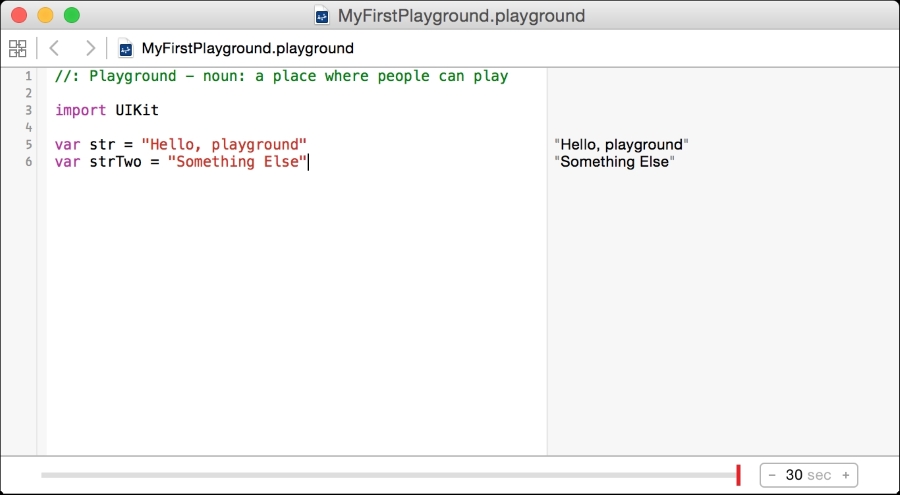Swift is a programming language developed by Apple primarily to allow developers to continue to push their platforms forward. It is their attempt to make iOS, OS X, watchOS, and tvOS app development more modern, safe, and powerful.
However, Apple has also released Swift as Open Source and begun an effort to add support for Linux with the intent to make Swift even better and a general purpose programming language available everywhere. Some developers have already begun using it to create command-line scripts as a replacement/supplement of the existing scripting languages, such as Python or Ruby and many can't wait to be able to share some of their app code with Web backend code. Apple's priority, at least for now, is to make it the best language possible, to facilitate app development. However, the most important thing to remember is that modern app development almost always requires pulling together multiple platforms into a single-user experience. If a language could bridge those gaps and stay enjoyable to write, safe, and performant, we would have a much easier time making amazing products. Swift is well on its way to reach that goal.
Developing software is like building a table. You can learn the basics of woodworking and nail a few pieces of wood together to make a functional table, but you are very limited in what you can do because you lack advanced woodworking skills. If you want to make a truly great table, you need to step away from the table and focus first on developing your skill set. The better you are at using the tools, the greater the number of possibilities that open up to you to create a more advanced and higher quality piece of furniture. Similarly, with a very limited knowledge of Swift, you can start to piece together a functional app from the code you find online. However, to really make something great, you have to put the time and effort into refining your skill set with the language. Every language feature or technique that you learn opens up more possibilities for your app.
In order to use Swift, you will need to run OS X, the operating system that comes with all Macs. The only piece of software that you will need is called Xcode (version 7 and higher). This is the environment that Apple provides, which facilitates development for its platforms. You can download Xcode for free from the Mac App Store at www.appstore.com/mac/Xcode.
Once downloaded and installed, you can open the app and it will install the rest of Apple's developer tool components. It is as simple as that! We are now ready to run our first piece of Swift code.
We will start by creating a new Swift playground. As the name suggests, a playground is a place where you can play around with code. With Xcode open, navigate to File | New | Playground… from the menu bar, as shown in the following screenshot:
Name it MyFirstPlayground, leave the platform as iOS, and save it wherever you wish.
Once created, a playground window will appear with some code already populated inside it for you:
You have already run your first Swift code. A playground in Xcode runs your code every time you make a change and shows you the code results in the sidebar, on the right-hand side of the screen.
If you are familiar with other programming languages, many of them require some sort of line terminator. In Swift, you do not need anything like that.
Tip
You can download the example code files for this book from your account at http://www.packtpub.com. If you purchased this book elsewhere, you can visit http://www.packtpub.com/support and register to have the files e-mailed directly to you.
You can download the code files by following these steps:
- Log in or register to our website using your e-mail address and password.
- Hover the mouse pointer on the SUPPORT tab at the top.
- Click on Code Downloads & Errata.
- Enter the name of the book in the Search box.
- Select the book for which you're looking to download the code files.
- Choose from the drop-down menu where you purchased this book from.
- Click on Code Download.
Once the file is downloaded, please make sure that you unzip or extract the folder using the latest version of:
- WinRAR/7-Zip for Windows
- Zipeg/iZip/UnRarX for Mac
- 7-Zip/PeaZip for Linux

A playground is not truly a program. While it does execute code like a program, it is not really useful outside of the development environment. Before we can understand what the playground is doing for us, we must first understand how Swift works.
Swift is a compiled language, which means that for Swift code to be run, it must first be converted into a form that the computer can actually execute. The tool that does this conversion is called a compiler. A compiler is actually a program and it is also a way to define a programming language.
Once the machine code is generated, Xcode can wrap the machine code up inside an app that users can run. However, we are running Swift code inside our playground, so clearly building an app is not the only way to run code; something else is going on here.
The learning process of this book follows very closely to the philosophy behind playgrounds. You will get the most out of this book if you play around with the code and ideas that we discuss. Instead of just passively reading through this, glancing at the code, put the code into a playground, and observe how it really works. Make changes to the code, try to break it, try to extend it, and you will learn far more. If you have a question, don't default to looking up the answer, try it out.






